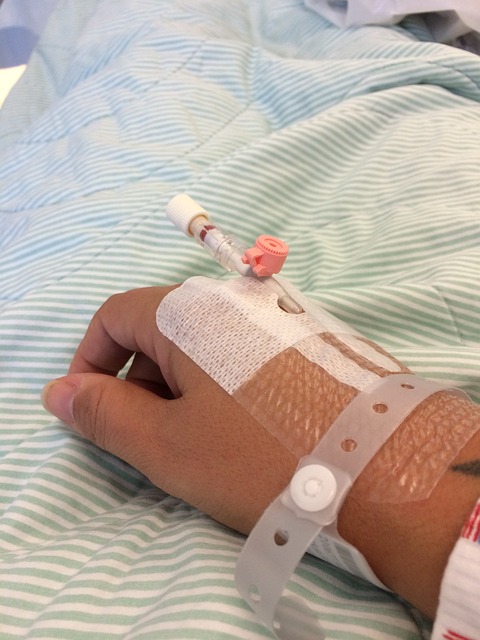Translation services for Patient Discharge Summaries (PDS) in the UK are essential for navigating healthcare regulations and ensuring effective communication. These services address challenges like complex medical terminology and data protection, providing accurate, secure, and compliant PDS translations. By employing native-speaking experts with medical knowledge, these services enhance care accessibility and continuity. Utilizing advanced technologies like Machine Translation with Human Review (MTHR), translation providers streamline processes, maintain accuracy, and cater to the UK's diverse linguistic landscape. Future trends include AI integration and a growing demand for domain-expertise translators, shaping the industry to meet evolving healthcare needs.
In the UK healthcare sector, ensuring regulatory compliance through accurate translation of patient discharge summaries is paramount. This article explores the intricate process of translating these critical documents, highlighting key considerations and best practices for healthcare providers. From understanding regulatory requirements to overcoming challenges in medical translation, we delve into techniques for maintaining consistency and accuracy. Additionally, we examine legal implications, streamline processes, present case studies, and discuss future trends in translation services for patient discharge summaries within the UK.
- Understanding Discharge Summaries and Regulatory Requirements in the UK
- The Role of Translation Services in Ensuring Compliance
- Challenges in Translating Medical Documentation Accurately
- Best Practices for Choosing a Reliable Translation Provider
- Techniques to Maintain Consistency Across Translated Documents
- Legal Implications and Accuracy Standards for Patient Records
- Streamlining the Discharge Summary Translation Process
- Case Studies: Successful Translation Projects for UK Healthcare Providers
- Future Trends in Medical Translation Services
Understanding Discharge Summaries and Regulatory Requirements in the UK

In the UK, Patient Discharge Summaries are essential documents that convey crucial information about a patient’s hospital stay and post-discharge care needs. These summaries are generated at the time of patient discharge, providing a concise overview for healthcare professionals, patients, and their families. They include details such as diagnosis, treatment plans, medications, and follow-up actions, ensuring a smooth transition from inpatient to outpatient care.
Regulatory compliance is a vital aspect of healthcare provision in the UK, and translation services play a significant role here. Many patients in the UK come from diverse cultural backgrounds, and their discharge summaries must be accessible and understandable to them. Professional translation services for patient discharge summaries ensure that language barriers are removed, facilitating effective communication and enabling patients from all linguistic backgrounds to receive appropriate care post-discharge.
The Role of Translation Services in Ensuring Compliance

In the healthcare sector, ensuring regulatory compliance is non-negotiable, especially when it comes to patient documentation. Translation services play a pivotal role in this regard, particularly for Patient Discharge Summaries in the UK. These summaries, often written in one language, must be accurately translated to meet legal and ethical standards, as well as maintain patient safety.
Professional translation services employ native-speaking experts who are well-versed in medical terminology. This guarantees that complex medical information is conveyed precisely and coherently, avoiding any potential errors or misunderstandings. By relying on these services, healthcare providers can rest assured that their discharge summaries are not only compliant but also accessible to a diverse range of patients, fostering better communication and care.
Challenges in Translating Medical Documentation Accurately

The accurate translation of medical documentation, particularly patient discharge summaries, presents several unique challenges in the UK healthcare sector. One of the primary hurdles is the complexity and technical nature of medical terminology. Medical professionals use specialized language and abbreviations that are often industry-specific, making it crucial for translators to have a deep understanding of both the source and target languages. Inaccurate translations can lead to miscommunication, potentially impacting patient care and regulatory compliance.
Another challenge arises from the sensitive and confidential nature of patient records. Translators must adhere to strict data protection guidelines while ensuring that the translated discharge summaries are culturally appropriate and accessible for non-native speakers. The demand for high-quality translation services for patient discharge summaries in the UK has grown, emphasizing the need for professional translators who can deliver precise and reliable results, ensuring regulatory compliance and maintaining the integrity of medical information.
Best Practices for Choosing a Reliable Translation Provider

When selecting a translation provider for patient discharge summaries, it’s crucial to ensure accuracy, security, and adherence to regulatory standards. Look for companies that specialise in medical translation services, as they will have a deep understanding of medical terminology and privacy laws like GDPR and HIPAA. Reputable providers should offer native-speaker translators who are also medically qualified, ensuring the translated documents are both precise and culturally appropriate.
Best practices include requesting samples or references, checking their compliance with industry standards (e.g., ISO 17100), and verifying data protection measures. Reading client testimonials and comparing rates transparently will help you make an informed decision. Engaging with a provider that offers quality assurance processes and revision policies further guarantees the reliability of your discharge summaries, ensuring they meet the stringent requirements for healthcare documentation in the UK.
Techniques to Maintain Consistency Across Translated Documents

Maintaining consistency across translated patient discharge summaries is paramount for ensuring regulatory compliance in the UK healthcare sector. One effective technique involves employing professional translation services specialised in medical documentation. These services not only harness linguistically skilled translators but also implement rigorous quality assurance processes, including proofreading and editing by native speakers, to preserve accuracy and clarity in the target language.
Additionally, establishing a standardised translation methodology and glossary can enhance consistency. This involves creating a comprehensive list of medical terms and phrases that are consistently translated across all documents. Utilising computer-assisted translation (CAT) tools also helps by storing previous translations, enabling translators to maintain terminological coherence while speeding up the overall translation process.
Legal Implications and Accuracy Standards for Patient Records

The translation of patient discharge summaries is a critical aspect of ensuring regulatory compliance, especially in the UK healthcare sector where accurate and timely documentation is legally mandated. These summaries, detailing a patient’s diagnosis, treatment, and recovery plan, must be accessible to all stakeholders, including medical professionals, insurance companies, and patients themselves. When translating these records, it’s not just about converting words from one language to another; it involves navigating complex legal implications and adhering to strict accuracy standards.
Translation services for Patient Discharge Summaries UK must comply with data protection regulations such as GDPR, ensuring patient confidentiality and the secure handling of sensitive medical information. Furthermore, translators must possess a deep understanding of medical terminology and cultural nuances to convey accurate and culturally appropriate content. This meticulous process guarantees that the translated summaries remain legally sound, preserving the integrity of medical documentation while facilitating effective communication across linguistic barriers.
Streamlining the Discharge Summary Translation Process

Streamlining the translation process for patient discharge summaries is crucial for healthcare providers in the UK to ensure regulatory compliance and efficient patient care. Traditional methods often involve manual efforts, leading to delays and potential errors. However, with advancements in technology, healthcare institutions now have access to professional translation services tailored specifically for medical documents. These services employ dedicated medical translators who possess expertise in both the source and target languages, ensuring accuracy and consistency.
By leveraging translation technologies, such as machine translation tools followed by human review, healthcare organizations can significantly speed up the process. This approach not only reduces turnaround times but also maintains the critical quality standards required for discharge summaries. Moreover, integrating these services into existing workflows enables seamless handling of high-volume translations, ensuring that patient records are accurately and timely translated, catering to a diverse patient population in the UK.
Case Studies: Successful Translation Projects for UK Healthcare Providers

In the realm of UK healthcare, ensuring regulatory compliance is non-negotiable, especially when it comes to patient discharge summaries. These documents play a pivotal role in continuity of care and legal documentation. Translation services for Patient Discharge Summaries UK have emerged as a game-changer, enabling healthcare providers to communicate effectively with diverse patient populations.
Successful case studies highlight the impact of professional translation services. For instance, a leading London hospital collaborated with a renowned language service provider to translate discharge summaries into multiple languages, catering to its increasingly multicultural patient base. This initiative significantly reduced miscommunication and improved patient satisfaction, demonstrating the effectiveness of accurate and timely translations in healthcare settings.
Future Trends in Medical Translation Services

The future of medical translation services, particularly in the context of translating patient discharge summaries for regulatory compliance in the UK, is expected to be shaped by several trends. Artificial Intelligence (AI) and Machine Translation (MT) technologies are poised to play a pivotal role. Advanced AI-powered tools can significantly enhance efficiency and accuracy, enabling faster processing of large volumes of medical documents while maintaining critical nuances and terminology.
Another notable trend is the increasing demand for specialized medical translators who possess deep knowledge of specific medical fields. As healthcare becomes more globalized, ensuring precise communication across diverse languages and cultural contexts is essential. Translation services for Patient Discharge Summaries UK will continue to evolve, leveraging these technological advancements while maintaining a human touch to guarantee clarity and comprehension for all stakeholders involved in patient care and regulatory affairs.
Translation services play a pivotal role in ensuring regulatory compliance for patient discharge summaries in the UK healthcare sector. By employing professional translators and implementing best practices, healthcare providers can streamline their processes, maintain consistency, and meet legal standards. Accurate translation is crucial to preserving the integrity of medical records, facilitating effective communication, and enhancing patient care outcomes. As the demand for multilingual healthcare documentation grows, investing in reliable translation services becomes an indispensable step towards meeting the diverse needs of a globalized UK healthcare system.



